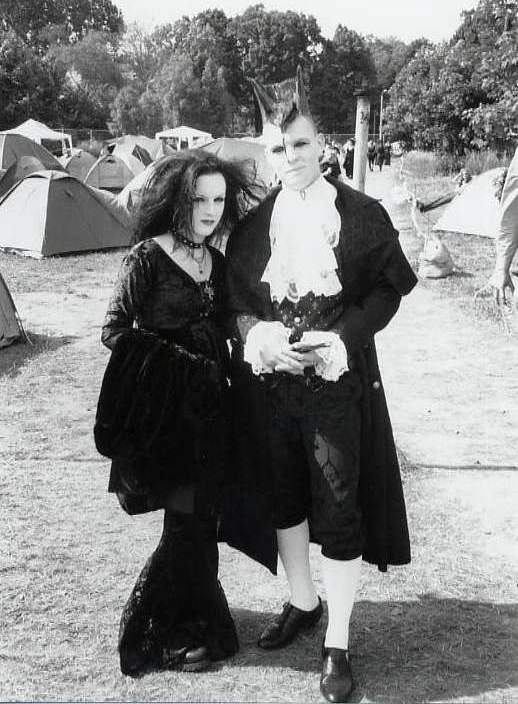I remember telling my father I was getting my Ph.D. in Gothic literature and he replied, confused, “Gothic like Goths? The people who wear all black?” While technically true, this definitely wasn’t my area of study and I as tried to explain I realized how difficult it can be to define what is gothic. Historically, the Goths were a group of Germanic tribes that toppled the Roman Empire and plunged Europe into the Dark Ages. The term “Gothic” was first used to describe the architecture that developed during this period which was considered barbaric and garish by Renaissance artists. Borrowing the term’s association with darkness and superstition, Horace Walpole used to describe his novel The Castle of Otranto: A Gothic Story (1765). In the 1970s, bands like Joy Division and The Cure adopted the genre’s macabre elements to create Gothic rock, a genre of atmospheric post-punk rock with a thriving Goth subculture. At each stage in its evolution, the Gothic has exceeded existing boundaries to influence literature, film, popular culture and fashion to the point that a pair of black Crocs festooned in metal spikes and chains can now be described as “gothic”.

Part of the reason the Gothic can be difficult to define is that the genre is an “uneasy conflation of genres, styles and conflicted cultural concerns” (Hogle 2). Walpole intended his novel to be a combination of “two kinds of romance, the ancient and the modern” (Walpole 65). Predictably Otranto is torn between the hyper-rationality of the Enlightenment that demanded: “strict adherence to common life” and the passionate feelings of Romanticism where “all was imagination and improbability” (Walpole 65). Trying to wed the best of both genres of writing, Walpole creates a marriage of high-brow aesthetics and low-brow supernatural content that defies easy categorization. As a result, the genre “oscillates” sometimes violently “between the earthly laws of conventional reality and the possibilities of the supernatural”(Hogle 4).
In light of the genre’s ambivalence, it might be more useful to regard the Gothic as both a genre, with a canon of original works, and as a mode with a set of conventions has permeated other genres like fantasy and science fiction. The Gothic literary genre flourished in Britain between 1765 and 1838, emerging as a dark strain of eighteenth-century Romanticism. Gothic plots featured supernatural occurrences, eerie atmospheres, and decrepit architectural spaces that represented the turmoil of their tortured protagonists. It is these conventions that have allowed the Gothic to survive beyond the Gothic novel’s heyday. Modern literature, film, and television rework the familiar staples of the Gothic genre. They can be set in an antiquated space—the abandoned castle, derelict labyrinth, haunted house, ruined abbey or urban underworld—which contains a threat in the form of monsters, ghosts, or specters which represent the return of repressed conflict that haunts the story’s protagonists.
Working off these definitions of the Gothic, I have organized this book to cover the historical periods that saw the rise and fall of the Gothic genre. The historical periods include the Eighteenth Century Gothic which covers early Gothic novels like Walpole’s Otranto and William Beckford’s Vathek as well as high Gothic works like Matthew Lewis’ The Monk. Victorian Gothic examines works that defined the genre during Queen Victoria’s reign like Robert Louis Stevenson’s The Strange Case of Dr. Jekyll and Mr. Hyde, and Oscar Wilde’s The Picture of Dorian Gray. Modern Gothic explores the genre’s evolution through the end of World War II.
Future editions of this textbook will include sections on:
- Pre-gothic
- Female Gothic
- Gothic Romantics
- Gothic Television
- Gothic Music
- American Gothic
- Irish Gothic
- Vampires
- Haunted Houses
- Ghosts
This guide is by no means comprehensive and my hope is that this project will continue to grow and become a living, collaborative resource for instructors of the Gothic and inspire the next generation of Gothic scholars.
Works Cited
Hogle, Jerrold E. “Introduction.” The Cambridge Companion to Gothic Fiction, edited by Jerrold E. Hogle, Cambridge University Press, 2002, pp. 1–20.
Walpole, Horace. The Castle of Otranto: A Gothic Story; and, The Mysterious Mother : A Tragedy. Broadview Press, 2003.
